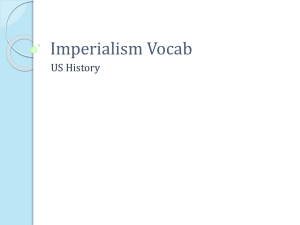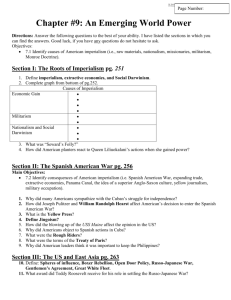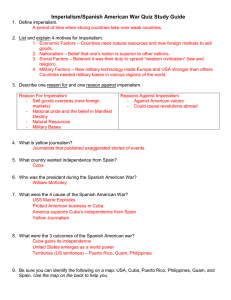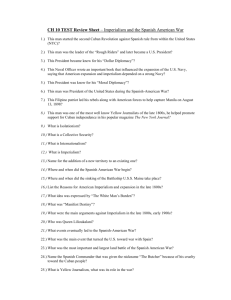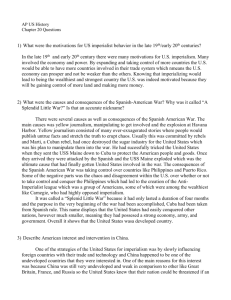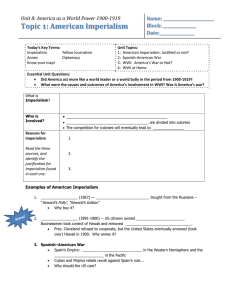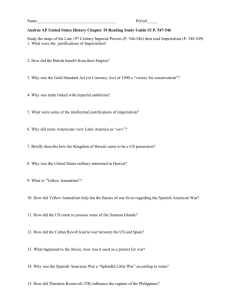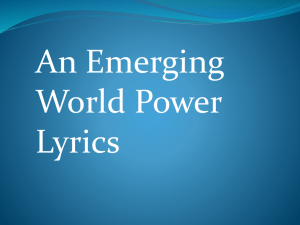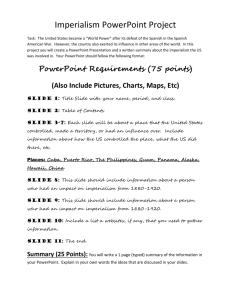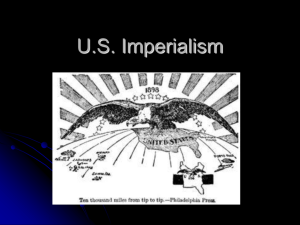U.S. History Unit III- Study Guide for Quest (small test?, large quiz
advertisement
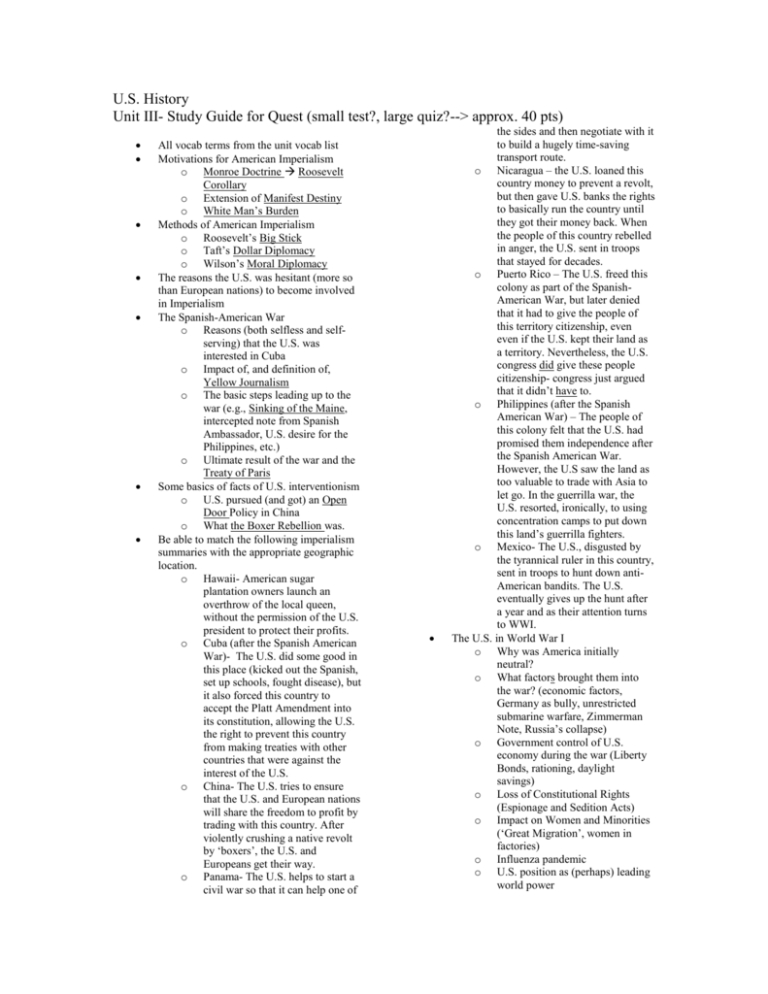
U.S. History Unit III- Study Guide for Quest (small test?, large quiz?--> approx. 40 pts) All vocab terms from the unit vocab list Motivations for American Imperialism o Monroe Doctrine Roosevelt Corollary o Extension of Manifest Destiny o White Man’s Burden Methods of American Imperialism o Roosevelt’s Big Stick o Taft’s Dollar Diplomacy o Wilson’s Moral Diplomacy The reasons the U.S. was hesitant (more so than European nations) to become involved in Imperialism The Spanish-American War o Reasons (both selfless and selfserving) that the U.S. was interested in Cuba o Impact of, and definition of, Yellow Journalism o The basic steps leading up to the war (e.g., Sinking of the Maine, intercepted note from Spanish Ambassador, U.S. desire for the Philippines, etc.) o Ultimate result of the war and the Treaty of Paris Some basics of facts of U.S. interventionism o U.S. pursued (and got) an Open Door Policy in China o What the Boxer Rebellion was. Be able to match the following imperialism summaries with the appropriate geographic location. o Hawaii- American sugar plantation owners launch an overthrow of the local queen, without the permission of the U.S. president to protect their profits. o Cuba (after the Spanish American War)- The U.S. did some good in this place (kicked out the Spanish, set up schools, fought disease), but it also forced this country to accept the Platt Amendment into its constitution, allowing the U.S. the right to prevent this country from making treaties with other countries that were against the interest of the U.S. o China- The U.S. tries to ensure that the U.S. and European nations will share the freedom to profit by trading with this country. After violently crushing a native revolt by ‘boxers’, the U.S. and Europeans get their way. o Panama- The U.S. helps to start a civil war so that it can help one of the sides and then negotiate with it to build a hugely time-saving transport route. o Nicaragua – the U.S. loaned this country money to prevent a revolt, but then gave U.S. banks the rights to basically run the country until they got their money back. When the people of this country rebelled in anger, the U.S. sent in troops that stayed for decades. o Puerto Rico – The U.S. freed this colony as part of the SpanishAmerican War, but later denied that it had to give the people of this territory citizenship, even even if the U.S. kept their land as a territory. Nevertheless, the U.S. congress did give these people citizenship- congress just argued that it didn’t have to. o Philippines (after the Spanish American War) – The people of this colony felt that the U.S. had promised them independence after the Spanish American War. However, the U.S saw the land as too valuable to trade with Asia to let go. In the guerrilla war, the U.S. resorted, ironically, to using concentration camps to put down this land’s guerrilla fighters. o Mexico- The U.S., disgusted by the tyrannical ruler in this country, sent in troops to hunt down antiAmerican bandits. The U.S. eventually gives up the hunt after a year and as their attention turns to WWI. The U.S. in World War I o Why was America initially neutral? o What factors brought them into the war? (economic factors, Germany as bully, unrestricted submarine warfare, Zimmerman Note, Russia’s collapse) o Government control of U.S. economy during the war (Liberty Bonds, rationing, daylight savings) o Loss of Constitutional Rights (Espionage and Sedition Acts) o Impact on Women and Minorities (‘Great Migration’, women in factories) o Influenza pandemic o U.S. position as (perhaps) leading world power
